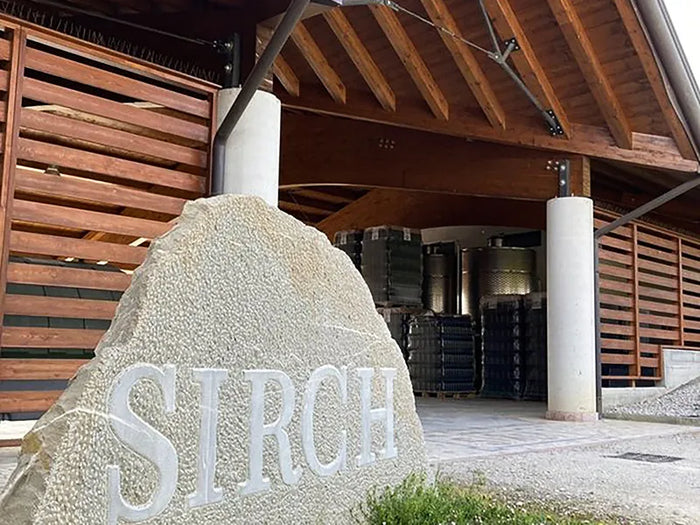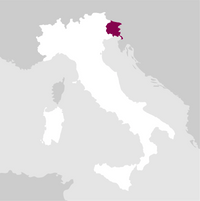Description
An indigenous Friulian variety of great tradition, its history has ancient origins if we accept the hypothesis that it is the famous Roman red wine called 'Pucinum' that Pliny the Elder tells us was present in what is now Friuli Venezia Giulia. The name derives from the colour of the stem that holds the grapes to the vine. The Friuli Colli Orientali DOC area offers a production of excellence. Soft and generous, it has a distinct gastronomic vocation.
Details

Perfume

Color

Taste
Serve at:
16 - 18 °C.
Longevity:
05 - 10 years
Decanting time:
1 hour

Pairings
- Start up year: 2015
- Oenologist: Luca Sirch
- Bottles produced: 650.000
- Hectares: 100
Sirch has invested in land, people and facilities and today cultivates its vineyards in three different locations in the Friuli Colli Orientali DOC region: Cividale del Friuli, Orsaria and Cladrecis. From here, it exports to many European countries and even reaching the United States of America thanks to Terlato Wines, a worldwide reality in wine distribution, which has chosen our company for its Terlato Vineyards label. SIRCH: the experience that comes from manual skills in the vineyard and in the cellar! A solid path of growth, which owes its fortune to the wise balance between contemporary vision and loyalty to its historical and natural roots. These are the values of tradition guiding SIRCH on this delicate path Read more


| Name | Sirch Friuli Colli Orientali Refosco 2022 |
|---|---|
| Type | Red still |
| Denomination | Colli Orientali del Friuli DOC |
| Vintage | 2022 |
| Size | 0,75 l |
| Alcohol content | 13.0% by volume |
| Grape varieties | 100% Refosco dal Peduncolo Rosso |
| Country | Italy |
| Region | Friuli-Venezia Giulia |
| Vendor | Sirch Azienda Agricola |
| Soil composition | Predominantly marl and sandstone of Eocene origin. |
| Cultivation system | Predominantly Guyot and Casarsa. |
| Harvest | Upon reaching phenolic maturity. |
| Wine making | After being destemmed, the grapes are placed in stainless steel tanks to ferment at a controlled temperature. During this phase, the must is stirred frequently in order to extract colour and aroma from the skins. |
| Aging | Once fermentation is complete, the wine is transferred to stainless steel tanks or barriques where it matures on its lees for a few months and kept at a constant temperature with frequent batonnage over time. At the end of this period, the wine is racked and blended and then proceeded to bottling, followed by a subsequent period of ageing in the bottle. |
| Allergens | Contains sulphites |




